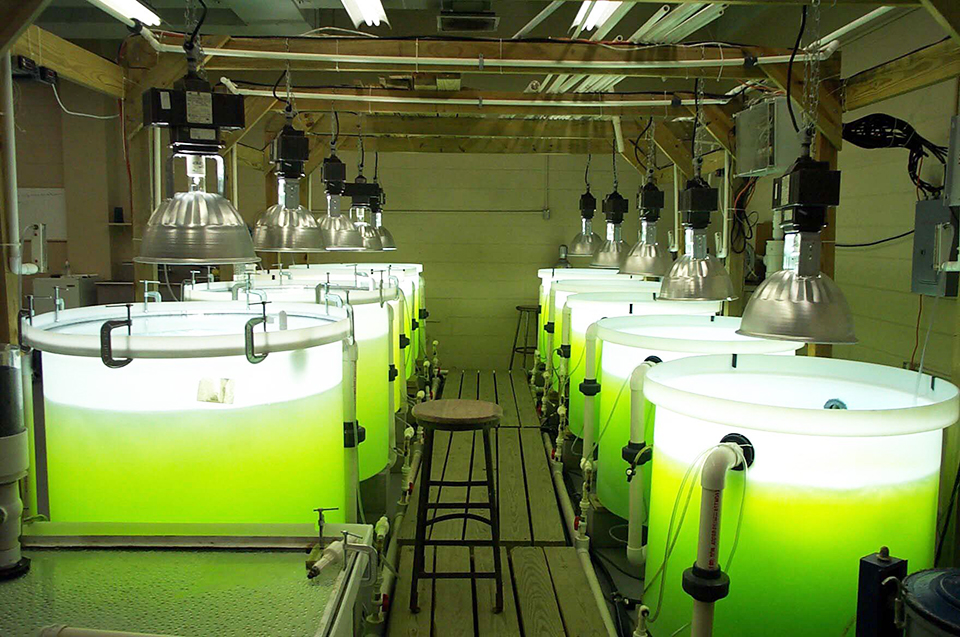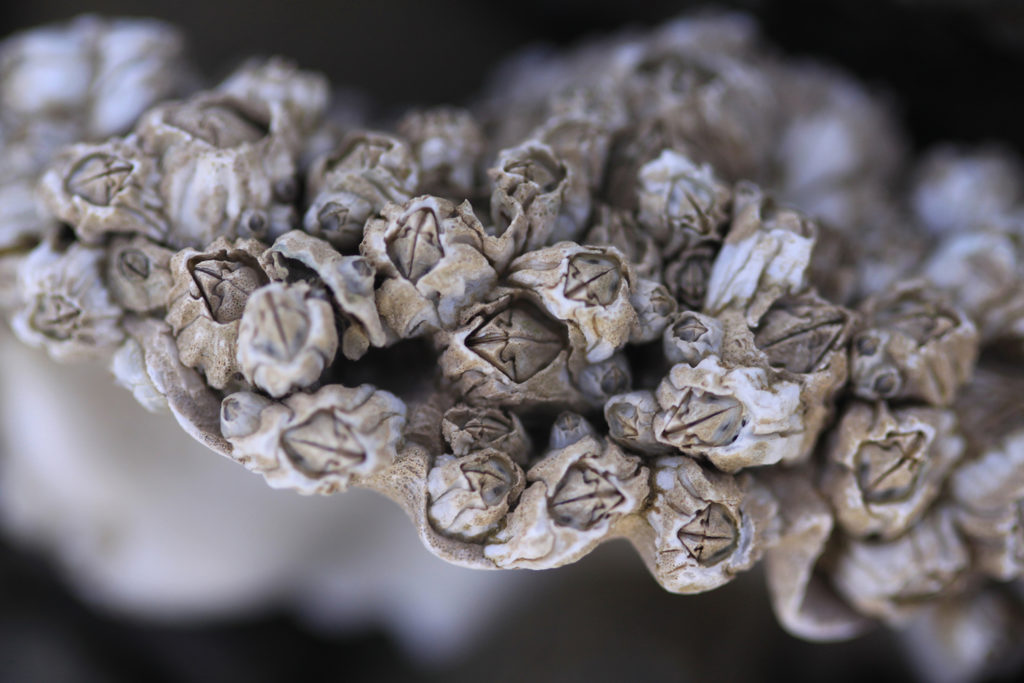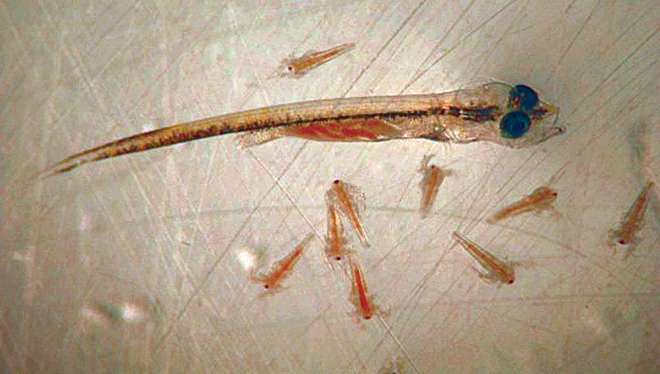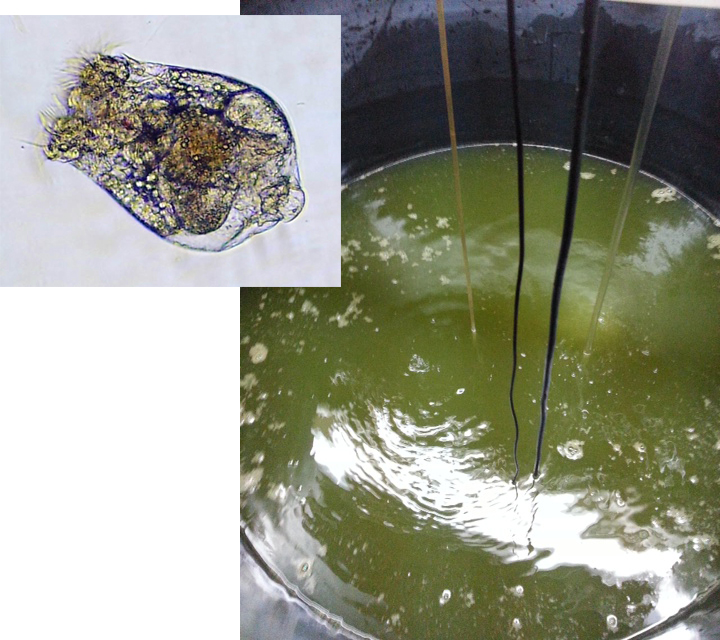Test finds similar profile reflected in rotifers that consume them

Live feed production has been recognized as a bottleneck to marine fish larviculture for decades. Most commercial facilities still rely on batch techniques established over 50 years ago. In the past decade, microencapsulated diets have been developed, but live feeds – including rotifers – are still the best diet for marine fish larvae.
A study of the effects of storage under 4 degrees-C refrigeration on the fatty acid composition of freshwater Selenastrum capricornutum algal paste determined the toxicological properties of the paste and its effect on the fatty acid composition of rotifers. Although several storage techniques have been developed for algae, no previous data looked at the effects of refrigerated storage.
Rotifers
Rotifers can be grown on microalgae or cultivated on formulated diets. The use of microalgae during the first-feeding process for fish larvae is believed to improve the nutritional condition of the larvae, either directly or through improving the nutritional value of the rotifers they consume within their shared environment.
While marine microalgae likely provide the best polyunsaturated fatty acids profile for marine zooplankton like rotifers, feeding freshwater microalgae has the potential to reduce cultivation costs.
Microalgae production
Microalgae was produced in a hydraulically integrated algal reactor system, harvested as a paste, refrigerated, and analyzed every two weeks. The system contained two 450-liter turbidostats and eight 446-liter continuous-flow reactors. Turbidostat data was collected and transmitted to the process control system via a monitoring unit located at the effluent of the reactors.
The reactors were equipped with a similar monitoring unit with a series of solenoid valves to facilitate sample retrieval. Both monitoring units contained sensors for temperature, conductivity, and pH, and a biomass photocell. Each reactor was continuously illuminated by a 400-watt metal halide lamp.
The system was operated at a system dilution rate of 0.38 per day, with pH of 7.3±2 and temperature at 28±2 degrees-C. Nutrients were maintained in excess within the system via a continuous feed into the reactors and into the turbidostats with each 20-minute harvest. Influent water was pretreated through a sand filter, ozone unit, and UV light. The effluent from the last reactor was passed through a continuous-duty centrifuge for cell separation.
Results
The algae for this study were collected once the system reached steady-state operating conditions. The fresh Selenastrum capricornutum paste had an almost threefold greater concentration of unsaturated fatty acids than saturated fatty acids. Over 50v of the unsaturated fatty acids were made up of omega-3 and omega-6 fatty acids.
With an increase in storage time, there was a significant decrease (P < 0.05) in the percentage of total unsaturated fatty acids (13 percent), and omega-3 and n-6 fatty acids in the paste. The same trend was observed for the nutritionally important C20:4n6, C20:5n3, and C22:6n3 fatty acids. The paste also reflected a significant increase in total saturated (37 percent) and monounsaturated fatty acids.
The decrease in unsaturated fatty acids combined with the increase in monounsaturated and saturated fatty acids indicated oxidative changes occurred during storage. LC50 values were greater than 200 ppm. No toxic effects were observed in rotifers exposed to algal extracts tested at a concentration representing the normal algal feeding level.
Rotifer content reflects algae
Rotifers fed two- and four-week-old algal paste had a significantly lower total unsaturated fatty acid content and significantly greater total saturated fatty acids than those fed fresh algae. These results parallel the changes seen in the algae during storage.
Compared to fresh algae, there were no significant differences for the n-6 group fed 4-week-old paste or the n-3 and n-6 groups fed 2-week-old paste. The levels of C20:4n6, C20:5n3, and C22:6n3 fatty acids did not differ between rotifers fed fresh or stored algae.
Conclusion
The use of refrigerated freshwater algal paste for production of rotifers results in live feed with adequate nutritional properties for marine larviculture. Use of freshwater algae stored up to four weeks for feeding rotifers intended as a food source for marine larviculture seems viable. This could reduce the costs associated with the production of marine algae and may provide an alternative to cryopreservation.
(Editor’s Note: This article was originally published in the August 2002 print edition of the Global Aquaculture Advocate.)
Now that you've reached the end of the article ...
… please consider supporting GSA’s mission to advance responsible seafood practices through education, advocacy and third-party assurances. The Advocate aims to document the evolution of responsible seafood practices and share the expansive knowledge of our vast network of contributors.
By becoming a Global Seafood Alliance member, you’re ensuring that all of the pre-competitive work we do through member benefits, resources and events can continue. Individual membership costs just $50 a year.
Not a GSA member? Join us.
Authors
-
Joan M. King, Ph.D.
Department of Food Science
Agricultural Center
111 Food Science Building
Louisiana State University
Baton Rouge, Louisiana 70803 USA[117,100,101,46,117,115,108,46,114,116,99,103,97,64,103,110,105,107,106]
-
Xiaoming Liang, Ph.D.
Department of Food Science
Agricultural Center
111 Food Science Building
Louisiana State University
Baton Rouge, Louisiana 70803 USA -
Kelly A. Rusch, Ph.D.
Department of Civil and Environmental Engineering
Louisiana State University
Tagged With
Related Posts

Aquafeeds
Barnacles to shake up live feeds for aquaculture?
Norwegian startup Planktonic AS believes that it has hit upon a viable alternative to traditional live diets in the form of nauplii from barnacles.

Health & Welfare
Green water culture of California halibut larvae
Although aquaculture offers potential for the production of California halibut, several aspects of production have yet to be optimized.

Aquafeeds
Live diets for larval fish, shrimp: Production, enrichment, feeding strategies
Live diets for reared marine larvae must be cost-effective and versatile while providing good nutrition and being easily captured and digested. Copepods offer superior nutritional value, but their rearing requires space and is laborious.

Health & Welfare
Rotifer enrichment: Concept simplifies larval fish feeding
In trials, a culture diet that naturally enhances rotifers and eliminates the need for enrichment was tested. Skretting feed specialists found similar growth and reproduction figures were registered with a conventional rotifer enrichment diet and a standalone diet for a period of nine weeks.


